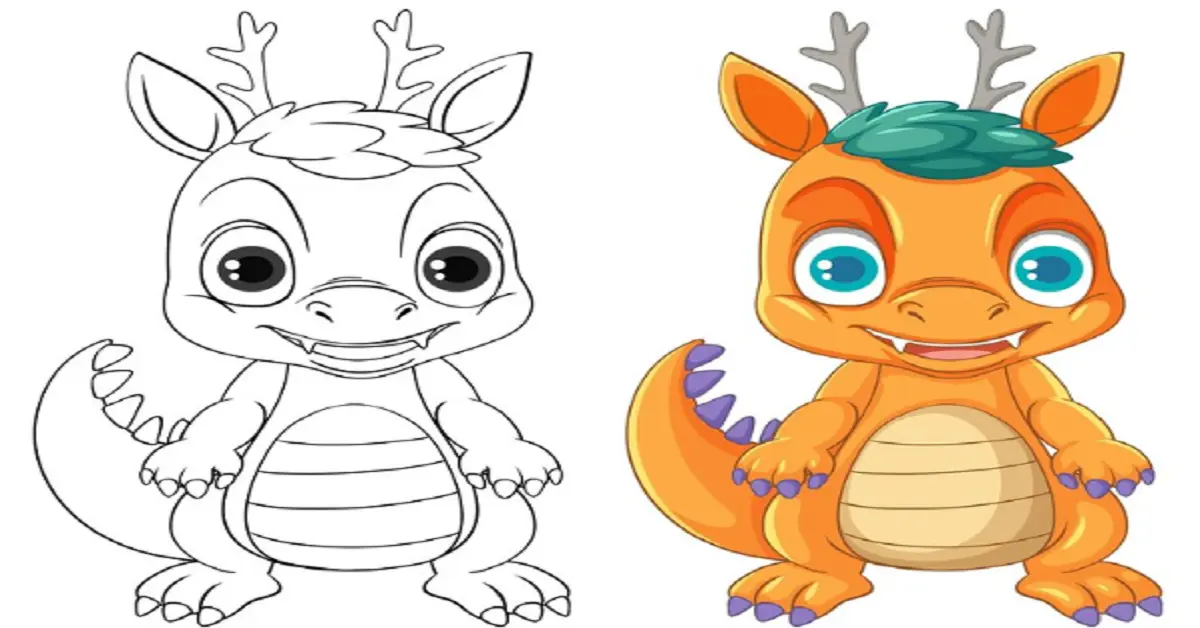How to Draw a Dragon: A Step-by-Step Guide

Introduction
drawing:5z_boyjkm98= dragon .Dragons have fascinated people for centuries. These mythical creatures appear in folklore, literature, and art across cultures. But why should you draw a dragon? Well, dragons are not only majestic but also a great way to practice different drawing techniques, from anatomy to shading. This guide will break down the process into manageable steps, making it easy for you to draw your very own dragon.
Materials Needed
Basic Materials
- Pencils (HB, 2B, 4B)
- Eraser
- Sharpener
- Sketchbook or drawing paper
Advanced Tools for Enthusiasts
- Fine liners or inking pens
- Colored pencils or markers
- Blending tools (like tortillons or blending stumps)
- Digital drawing tablet (for digital artists)
Understanding Dragon Anatomy
To draw a dragon, it’s helpful to study the anatomy of real-life reptiles like lizards and snakes. Most dragons have a combination of these features:
- Reptilian eyes
- Scales
- Wings similar to bats or birds
- Long, muscular tails
- Clawed limbs
Sketching the Basic Shape
Drawing Basic Shapes
Start by sketching the basic shapes that make up the dragon. Use circles for the head and joints, and ovals for the body. drawing:5z_boyjkm98= dragon
Connecting the Shapes
Next, connect these shapes with smooth lines to outline the dragon’s form. Think of it as drawing a skeleton for your dragon.
Drawing the Head
Eyes and Snout
Draw the dragon’s eyes first. Place them on the sides of the head for a more reptilian look. Sketch the snout by extending lines from the eyes and curving them down.
Adding Details to the Head
Add details like nostrils, horns, and frills. These elements give your dragon character and uniqueness.
Creating the Body
Drawing the Torso
Draw an elongated oval for the torso. Make sure it’s proportional to the head.
Shaping the Limbs
Sketch the limbs using cylinders. Dragons usually have strong, muscular legs. Don’t forget the claws!
Designing the Wings
Wing Anatomy
Wings are tricky but crucial. Draw them like bat wings, with long, thin bones connected by a membrane.
Adding Texture and Details
Add details like veins and folds in the wings to make them look more realistic.
Tail and Finishing Touches
Drawing the Tail
The tail is a long, flexible extension of the body. Add spikes or fins along its length for added detail. drawing:5z_boyjkm98= dragon
Adding Spikes and Scales
Draw small, overlapping scales on the body and limbs. Add spikes along the back and tail to enhance the dragon’s fierce appearance.
Adding Details
Texture and Scales
Add texture by drawing small, overlapping scales. Vary the size and shape of the scales to make the dragon look more natural.
Shadows and Highlights
Use shading to give your dragon depth. Add shadows where the light doesn’t hit, and highlights on the scales and wings to create a three-dimensional effect.
Inking Your Drawing
Choosing the Right Pens
Use fine liners or inking pens for this step. Choose a pen with a tip size that suits the level of detail in your drawing.
Inking Techniques
Go over your pencil lines with the pen, adding thicker lines for shadows and thinner lines for lighter areas. Be careful and deliberate with your strokes.
Coloring Your Dragon
Color Theory Basics
Choose a color palette for your dragon. Consider complementary colors for a striking look.
Coloring Techniques
Use colored pencils or markers to fill in your dragon. Layer colors to add depth, and use blending tools to smooth out the transitions.
Creating a Background
Setting the Scene
Think about where your dragon lives. Is it in a dark cave, a dense forest, or soaring through the sky? Sketch a simple background that complements your dragon.
Adding Depth
Use perspective and shading to add depth to your background, making your dragon stand out. drawing:5z_boyjkm98= dragon
Tips for Improvement
Practice Regularly
The key to improvement is practice. Draw regularly and challenge yourself with different poses and perspectives.
Studying Other Artists
Look at how other artists draw dragons. Study their techniques and incorporate what you like into your own drawings.
Common Mistakes to Avoid
Proportional Errors
Ensure the head, body, and limbs are proportionate. Use reference images to help with proportions.
Overcomplicating the Design
Keep it simple initially. Focus on getting the basic shapes and proportions right before adding intricate details.
Conclusion
drawing:5z_boyjkm98= dragon .Drawing a dragon is a rewarding experience. By following these steps, you can create a stunning piece of art that showcases your creativity and skills. Remember, the more you practice, the better you’ll get. So, grab your materials and start drawing your dragon today!